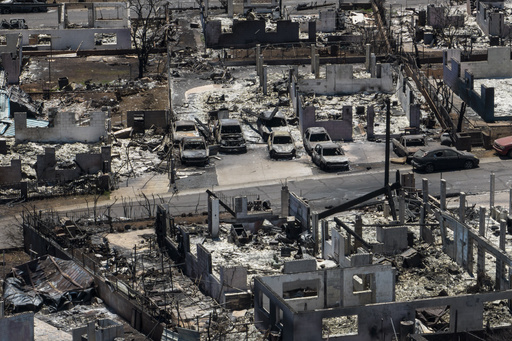
Hawaii Supreme Court to Review Insurance Aspects of Maui Wildfire Settlement
Introduction
On Thursday, Hawaii’s Supreme Court will deliberate on critical insurance issues that could impede a potential $4 billion settlement arising from the devastating wildfire in Maui, which was the deadliest in the United States in over a century. This tragic event resulted in the destruction of the historic town of Lahaina, leading to over 100 fatalities, obliteration of thousands of properties, and an estimated $5.5 billion worth of damages. In the wake of the disaster, numerous lawsuits have been filed against the parties involved.
Settlement Background
A settlement was announced in the summer following the wildfire, with seven defendants agreeing to pay $4 billion to address the claims of thousands affected. The legal representatives of the individual plaintiffs supported the deal, fearing that Hawaiian Electric, the utility company allegedly responsible for igniting the fire, could face bankruptcy. Other defendants include the state government, Maui County, and Kamehameha Schools, a major private landowner in the region. While plaintiffs’ attorneys acknowledged that the $4 billion would not fully cover their losses, they deemed the settlement reasonable, given Hawaiian Electric’s limited financial resources.
Legal Challenges to the Settlement
Victims’ lawyers requested that Judge Peter Cahill prevent insurance companies from seeking separate recoveries from the defendants that contributed to the disaster—a stipulation critical to securing the settlement. Judge Cahill concurred, ruling that insurers could only seek reimbursement from the agreed-upon $4 billion fund. This decision has been contested by a group of around 200 property and casualty insurers, which have already disbursed over $2.3 billion in claims and are anticipating another billion in payouts. They argue for the right to pursue independent claims against the accused parties.
The judge is awaiting guidance from the state Supreme Court on subrogation, a process that permits insurers to reclaim funds from liable parties following a covered loss. There are questions surrounding whether existing state laws on health care reimbursement should extend to property and casualty insurance, affecting insurers’ rights to pursue legal action independently.
Subrogation Explained
Subrogation is a commonplace legal framework in the insurance sector that enables companies to seek recovery from those responsible for losses they cover. Insurers view this process as essential for managing costs related to significant events, thus preventing increases in premiums for policyholders. However, this mechanism does not apply to natural disasters but is typically employed when another party is at fault.
Governor Josh Green has publicly criticized the practice of subrogation, arguing that while insurers enjoy profits during non-disaster times, they offer no refunds to policyholders. Yet, in moments of tragedy, they attempt to recover funds paid out to victims. “This is inherently unjust,” he remarked regarding the subrogation process.
Insurers’ Perspective
Vincent Raboteau, representing the insurers, asserted that the industry has been unjustly labeled as antagonistic to the community, diverting resources while those accountable for the fires evade responsibility. Insurers emphasize their commitment to holding defendants accountable while ensuring that wildfire victims receive timely compensation. They have pointed out that the investigations regarding the cause of such fires require significant time and financial resources, which they undertake.
According to insurers’ legal briefs, they were quick to fulfill claims, which has been crucial for victims needing immediate assistance with recovery and rebuilding efforts. Many wildfire victims benefitted from these swift payments, which provided critical financial support in a time of urgent need.
Timeline for Victim Compensation
The timeline for disbursing compensation to victims appears uncertain. Should the state Supreme Court rule that insurance companies can pursue defendants directly, it could undermine the entire settlement agreement, prompting the plaintiffs to return to the courtroom for a trial schedule. Conversely, if the court decides in favor of limiting the insurers’ actions, the settlement may move closer to finalization, initiating the processes for distributing funds.
In the event of a loss for either party, there is the possibility that an appeal could reach the U.S. Supreme Court, prolonging the resolution further.

